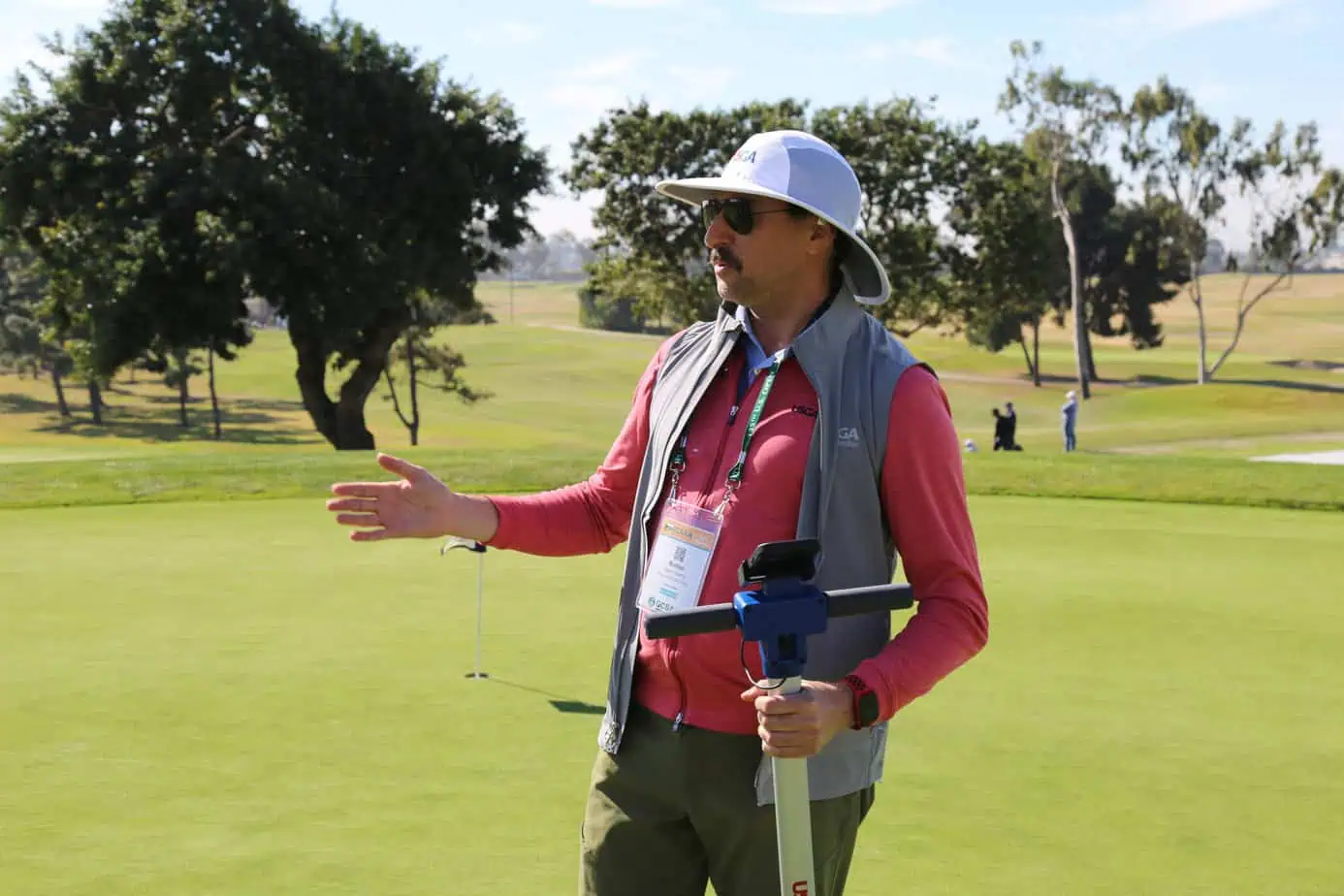USGA; “Irrigation is the number one limiting factor”
The question of how to save water has been on his mind for years: Dr. Matteo Serena, Senior Manager at the USGA responsible for irrigation research, primarily advises golf courses in the southwest of the USA. Born in Italy, he works mainly with those states that have been struggling with increasing water shortages for years: Arizona, Nevada, New Mexico and California. We wanted to know from him: How critical is the current water situation for golf courses in California really?
Serena: It’s mixed and it really depends on where the golf course is located. But in general, they are facing increasing pressure regarding the restrictions. Fortunately, in the last two years we had a good, wet, winter with heavy precipitation so the reservoirs in California were filled up.
Is it actually harder for the USGA to talk about the importance of water conservation after these two winters, because the mindset might me, that the consequences of climate change aren’t so extreme?
Serena: That is correct. It has been challenging to push the topic. When I started at the USGA in 2022, there was a lot of demand for our help. Then, in the Southwest, the rain came, and everybody was like, ‘We’re good. There’s no problem.’
Is there a problem?
Serena: Yes. There are patterns with climate change. The long-term situation is obviously getting worse. Our job at the USGA is to be prepared by conducting research and supporting the golf courses.
Would you say that areas like Arizona or Nevada, where it’s drier and hotter than in most parts of California, are more prepared for droughts?
Serena: I would say Nevada is more prepared than Arizona. Nevada, because the Las Vegas area is basically 100% dependent on Colorado River water. They’ve implemented many restrictions and limitations, which are pretty severe for landscape, parks and golf courses breaking the rules. They had to reduce to four acre feet of water per acre. They’re even talking about strengthening those restrictions even more, starting in 2027.
Which kind of water is mainly used in Nevada?
Serena: Almost all of the golf courses in Nevada use recycled water, but the technology to purify water gets better and cheaper every year. The city of Las Vegas is now taking the recycled water and running it through reverse osmosis and basically creating purified water, which they send back to Lake Mead and reuse it for potable water. Grey water used to be freely available at a discounted rate for golf courses. Now this is slowly changing, and the water will be resold to the golf course at the price of potable water.
Do superintendents or club managers from the north of the US to the southern states realize how strict regulations in the South are in the meantime?
Serena: Not really, there is a steep learning curve for them when moving or learning about the Southwest. The irrigation is the number one limiting factor here. If you don’t have water, you don’t have golf. A superintendent who moves to the south has to learn to irrigate really well.
Are there problems with the quality of recycled water?
Serena: It depends. The recycled water has salts dissolved in it which over time can build salinity and lead to some issues. So, you have to irrigate more to leach the salt out. When precipitation gets less frequent, salinity builds up more, and therefore problems can start to be more apparent.
The use of main water for the irrigation of golf courses is not unusual in the US. Is there a growing consciousness of the fact that golf courses actually use drinking water?
Serena: It is a concern because, first of all, water is a is a limited resource and you could grow crops and food with it and use it for humans. First, we will always have to guarantee water for the people. But I am not sure if there will be more limitations on the use of fresh water for golf courses, because we are getting better at recycling water and making it drinkable again.
But what would happen to golf courses in Nevada or Arizona if recycled water is no more for sale?
Serena: They could face a decision where going out of business could be a possibility. If there is no place for them unless they find a way to reduce the irrigated acreage even further or use other strategies to exist with minimal irrigation. We will experience courses in Las Vegas where they’re going to get their water budget doubled in the next few years.
What is the average water budget for an 18-hole golf course in the South?
Serena: On the average I would say anywhere from 600,000 to over 1,000,000 Dollars.
Is the reduction of irrigated turfgrass and a move to more drought areas a solution?
Serena: Yes, that is a topic the USGA is really pushing. Last year we had the U.S. Open at Pinehurst No. 2. The turfgrass acreage of Pinehurst was reduced heavily, but everybody had a great championship. The course looked phenomenal. Pinehurst can host the championship with about 58 acres of irrigated turfgrass. And then we have some golf courses here in the West with 100, 200 and 400 acres. That is a little excessive.
Do more drought areas also mean less maintenance costs?
Serena: No, first you have to buy all the material to build it up, plants and shrubs, the gravel, the mulch. Then it oftentimes doesn’t mean less maintenance. Their need for work time can almost double compared to turfgrass. A landscape needs to be trimmed and cleaned because it’s got to look appealing. The other issue especially in the Southwest is, that golf clubs are afraid to reduce the acreage now in case they get asked to reduce more. So they want to hold on to as much as possible turfgrass as long as they can.
Which chances do you see for better irrigation because of new technology in the future?
Serena: First, there will always be something new on the market. And then we have a lot of technologies with a lot of potential, like the method of subsurface drip. We tested it at a golf course and measured 40 to 80% of water reduction. But we see very limited acceptance of this technology.
Could AI be a big help in collecting data or developing the right irrigation systems?
We are already at a point, where remote sensing, drones, mower mounted devices or satellites plays a role. I think all of that is going to get to a point where it can be integrated into a single platform, that will make automatic irrigation decisions at the course level. Then the Superintendent just has to make sure that nothing is going wrong.








